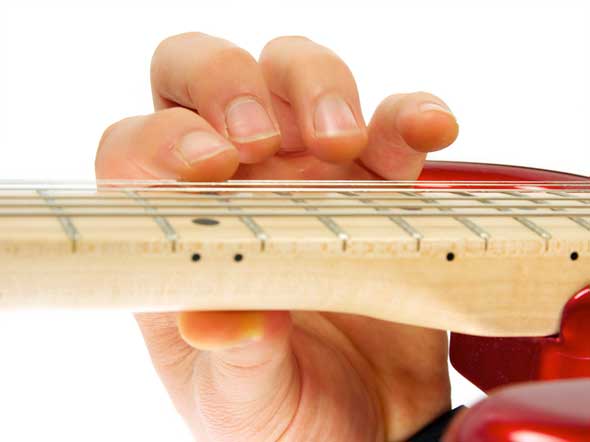
Natural Harmonics
A natural harmonic is produced by lightly touching an open string at either the 12th, 7th, 5th or 19th frets, while picking it.* Harmonics must be played directly over the fret and should just touch the string, not push it down.

Playing harmonics on the 12th fret of the first string.

To play harmonics, use the underside of your first finger.
Harmonics are indicated by diamond shaped notes as such:

*Harmonics can be located at other frets, but these are the most common.
On the 12th fret, the harmonics produced have the same pitch as the fretted note on the same string.
E.g., first string, 12th fret note (E)

first string, 12th fret harmonic (E)

On the 7th fret, the harmonics produced are an octave higher than the fretted note on the same string.
E.g., fifth string, 7th fret note (E)

fifth string, 7th fret harmonic (E)

On the 19th fret, the harmonics produced have the same pitch as the fretted note on the same string. These harmonics are also identical to the harmonics produced on the 7th fret.
On the 5th fret, the harmonics produced are an octave and a fifth higher than the fretted note on the same string.
E.g., fourth string, 5th fret note (G)

fourth string, 5th fret harmonic (D)

The following table sets out the note names of harmonics produced on the 5th, 7th, 12th and 19th frets;
Table of Natural Harmonics

In this table, the harmonics produced on the 7th and 19th frets are identical, however, the harmonics produced on the 5th fret are an octave higher than those on the 12th fret.